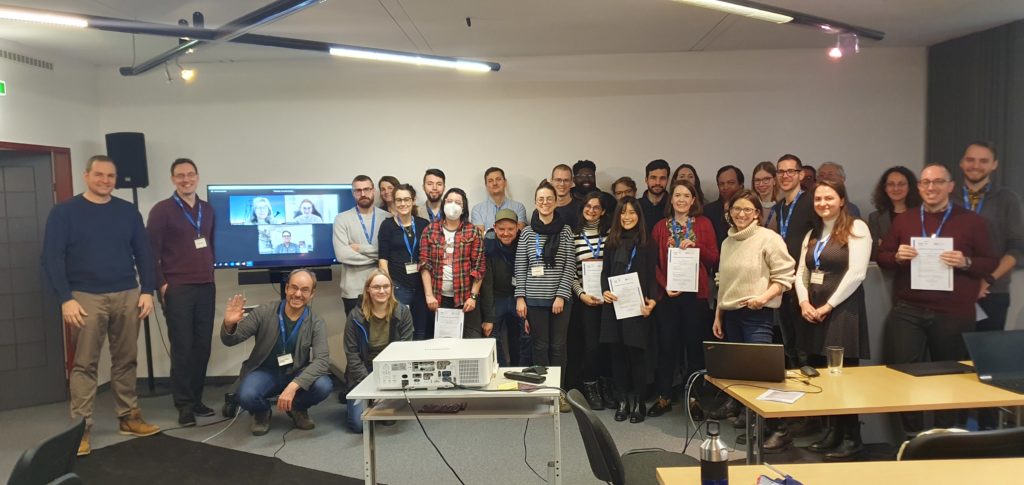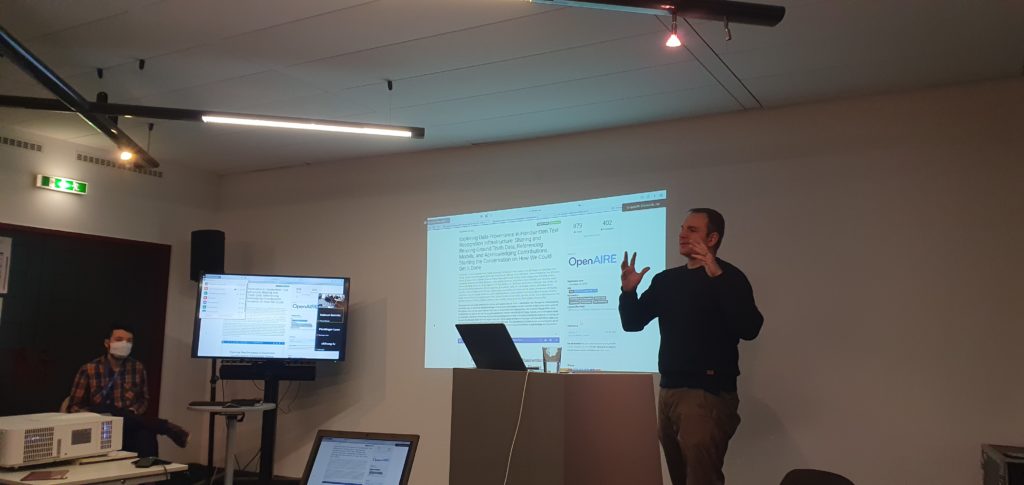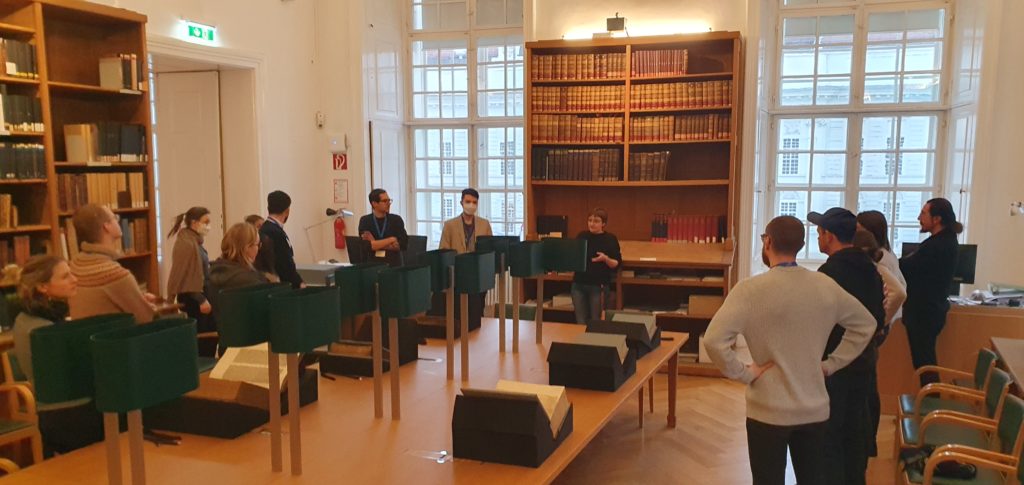“I want to organise a Transkribus workshop but I don’t know where to start. Could you give me some advice?” This is a common question we get at READ-COOP. Learning to digitise historical documents can be a challenge for students, colleagues and volunteers in citizen science projects, and a workshop is a great way to help them get to grips with the process.
But organising a workshop is easier said than done. Which topics should be covered? What format should the workshop take? How interactive should it be?
To help answer these questions, we sat down with researcher Jan Odstrčilík from the Institute for Medieval Studies at the Austrian Academy of Sciences. In the winter semester of 2022, Jan brought together a group of colleagues from all over Europe and the US to organise the institute’s first HTR Winter School. This multi-day workshop was designed to give students all the skills they need to digitise historical documents, using both Transkribus and various other HTR tools.
In this post, Jan shares his recipe for organising a successful Transkribus workshop as well as some vital tips for organising a similar event.
The big idea
Like many big ideas, the inspiration to organise an HTR Winter School came as a result of collaboration. Jan was already working with Helmut Reimitz from Princeton University on a model for medieval scripts when the pair came across Tim Geelhaar from the University of Bielefeld, who was creating a model for Carolingian minuscule with some pretty good results.
“We started to have discussions and to cooperate. We noticed interesting and different challenges for the Carolingian minuscule and the late medieval Latin, and realised how useful it could be to organise some type of a course.” With that, the idea for the winter school was born.
The team was then joined by highly experienced Tobias Hodel from the University of Bern. There were also co-organisers from the University of Vienna and the Czech Academy of Sciences in Prague, making it possible to create a workshop with four different focus points: Carolingian minuscule, Late Medieval Latin, Medieval Germanand Medieval Czech (see the list of all organizers) .While the workshop was designed with PhD students in mind, the team decided to open it up to anybody who wanted to learn about handwritten text recognition of medieval manuscripts, resulting in quite a diverse range of participants.

Choosing the format
The next step was to decide how long the event should be. “Most workshops that I have experienced are strictly time-limited to a couple of hours and thus only allow a brief introduction,” Jan explained. “We wanted to offer a comprehensive experience: a mix where participants could not only learn the basics of Transkribus but where they could work on specific manuscripts, inspect them, discuss them, transcribe them, train models and then — at the end — make the results public.”
“But this requires time, so we decided to go for four virtual meetings every two to three weeks, which we concluded with a workshop in Vienna. This provided the participants enough time to absorb all the new information, as well as time to transcribe the necessary pages for training between individual meetings.”
The team decided to cover a diverse range of topics during the workshop, to give the participants comprehensive knowledge of HTR as a whole. “The virtual meetings focused closely on handwritten text recognition, including both theory and technical aspects. We followed that with the basics of the Transkribus program that were gradually deepened with new information (advanced layout, tags, training of the models, etc.) at each subsequent virtual meeting.”
There were several reasons behind the choice to use Transkribus as the main HTR platform for the workshop. “Firstly, Transkribus is currently the most accessible platform for independent researchers and small teams: anybody can use it regardless of the performance of their computer and without the need for any server. Moreover, the user community around Transkribus is very active and supportive, which was from our viewpoint a major factor.”

Learning through doing
Right from the start, it was clear that the HTR Winter School should be as interactive as possible. The team wanted to give the students the chance to work on manuscripts in exactly the same way as they would in a real research environment.
“We wanted to give the students a common goal: Each of the four groups worked on selected manuscripts and had to collectively decide on the best methodology for the preparation of the models. We reserved part of every virtual meeting for group work. Then during the in-person workshop in Vienna, participants learnt how to use TEI-Publisher to display editions and they published the Ground Truths using Zenodo and HTR United.”
Despite the focus on digital technology, it was important for the team that the participants also spent time with original manuscripts in physical form. “Although we mainly dealt with computer tools, the material world is still irreplaceable. That’s why we visited the Austrian National Library so that participants could see the manuscripts they had been working with until then only in a digital form. There is still something magical and deeply affecting in the ability to look and touch these objects. You could observe the immense excitement in the group.”

The end result
But of course, the big question is: how did it all go? According to the students, very well. “Based on our survey after the workshop, the participants appreciated the hybrid format as well as the different teams and the diverse composition of participants. They also liked the connection between the theory and practice and the ability to see manuscripts in person.”
The hybrid format, mixing virtual sessions with an in-person workshop, was very popular with the organisational team, too. “This kind of format is demanding but rewarding. Both the participants and we as organisers learned a lot.”
For Jan though, one of the highlights came right at the end of the course, when the different groups presented the results of their work throughout the winter school. “Each of the teams chose a slightly different approach and it was great to see what everybody achieved.”
“Our experience from the workshop in Vienna is summarized by the video made by one of our participants, Giuseppe Paternicò.”
© Giuseppe Paternico
Jan’s tips for organising your own Transkribus workshop
Despite the success of the event, there was something Jan and his team would do differently next time. “Even with a lot of time in the schedule, we still ran short of it. This was especially apparent in the in-person workshop where we wanted students to learn how to publish their transcriptions and Ground Truths. We succeeded thanks to Tobias Hodel, who took care of this part, but it was a little bit in a hurry. Those things are simply very time-consuming and so it is necessary to reserve enough time for this last step.”
Jan also had one final tip for anyone organising a workshop involving a lot of digital tools. “It was great and necessary to have a dedicated person (in our case, Leon Pürstinger) who took care of all the digital stuff, like Zoom and the recordings.”
Thanks, Jan, for talking to us and congratulations on the successful event!
